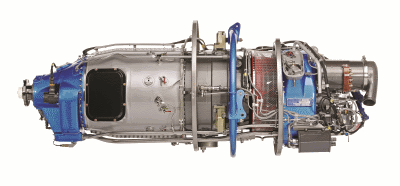Wed, Aug 18, 2021
AD 2021-15-10 Prompted By Several Reports Of Engine Gas Generator Speed (Ng) Rollbacks
The FAA is adopting a new airworthiness directive (AD) for all GE Aviation Czech s.r.o. (GEAC) H75-200, H80-100, and H80-200 model turboprop engines.

This AD was prompted by several reports of engine gas generator speed (Ng) rollbacks occurring below idle on GEAC H75-200, H80-100, and H80-200 model turboprop engines. This AD requires an inspection of a certain part number (P/N) fuel control unit (FCU) and, if deficiencies are detected, replacement of the FCU with a part eligible for installation. The FAA is issuing this AD to address the unsafe condition on these products. This AD is effective September 21, 2021.
Supplementary Information: The FAA issued a notice of proposed rulemaking (NPRM) to amend 14 CFR part 39 by adding an AD that would apply to all GEAC H75-200, H80-100, and H80-200 model turboprop engines. The NPRM published in the Federal Register on April 20, 2021 (86 FR 20465). The NPRM was prompted by several reports of engine gas generator speed (Ng) rollbacks occurring below idle on GEAC H75-200, H80-100, and H80-200 model turboprop engines. The NPRM proposed to require an inspection of a certain P/N FCU and, if deficiencies are detected, replacement of the FCU with a part eligible for installation. The FAA is issuing this AD to address the unsafe condition on these products.
The European Union Aviation Safety Agency (EASA), which is the Technical Agent for the Member States of the European Community, has issued EASA AD 2020-0082, dated April 1, 2020 (referred to after this as “the MCAI”), to address the unsafe condition on these products.
The MCAI states:
- Several occurrences have been reported of engine gas generator speed (Ng) rollbacks below idle on engines equipped with an affected part.
- The investigation determined that, during these events, the engine control lever (ECL) was set to idle, and identified as contributing factors specific environmental temperatures, possibly in combination with a high power off-take. The idle setting may be used in flight, in particular during the approach phase.
- This condition, if not detected and corrected, may lead to loss of engine power and eventually, on a single engine aeroplane, possibly result in loss of control.
- To address this potential unsafe condition, GEAC issued the ASB providing applicable instructions.
You may obtain further information by examining the MCAI in the AD docket at https://www.regulations.gov by searching for and locating Docket No. FAA-2021-0316.
More News
Aero Linx: Transport Canada We are a federal institution, leading the Transport Canada portfolio and working with our partners. Transport Canada is responsible for transportation p>[...]
Gross Navigation Error (GNE) A lateral deviation from a cleared track, normally in excess of 25 Nautical Miles (NM). More stringent standards (for example, 10NM in some parts of th>[...]
From AirVenture 2017 (YouTube Edition): Flight-Proven Booster On Display At AirVenture… EAA AirVenture Oshkosh is known primarily as a celebration of experimental and amateu>[...]
Aircraft Parachute System (CAPS) Was Deployed About 293 Ft Above Ground Level, Which Was Too Low To Allow For Full Deployment Of The Parachute System Analysis: The day before the a>[...]
Also: 48th Annual Air Race Classic, Hot Air Balloon Fire, FAA v Banning 100LL, Complete Remote Pilot The news Piper PA-18 Super Cub owners have been waiting for has finally arrived>[...]
 ANN's Daily Aero-Linx (06.29.25)
ANN's Daily Aero-Linx (06.29.25) ANN's Daily Aero-Term (06.29.25): Gross Navigation Error (GNE)
ANN's Daily Aero-Term (06.29.25): Gross Navigation Error (GNE) Classic Aero-TV: Anticipating Futurespace - Blue Origin Visits Airventure 2017
Classic Aero-TV: Anticipating Futurespace - Blue Origin Visits Airventure 2017 NTSB Final Report: Cirrus SR22
NTSB Final Report: Cirrus SR22 Airborne Affordable Flyers 06.26.25: PA18 Upgrades, Delta Force, Rhinebeck
Airborne Affordable Flyers 06.26.25: PA18 Upgrades, Delta Force, Rhinebeck



